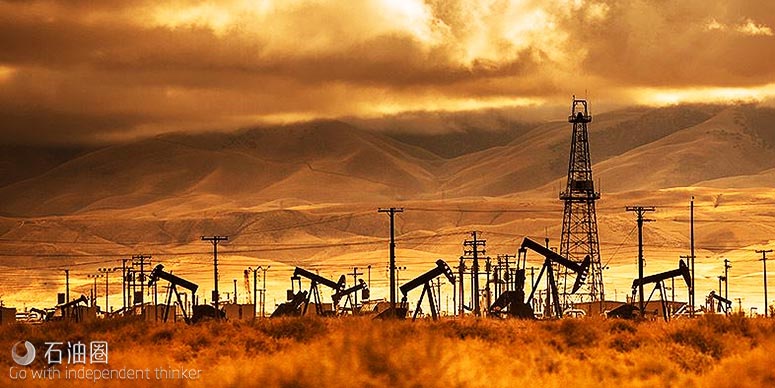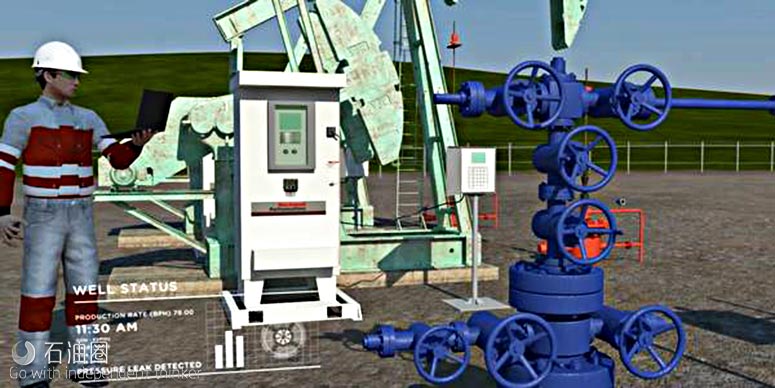Pump failure is one of the biggest problems operators face in enhanced oil recovery (EOR) operations.
Wellhead controllers provide local control, or automation, along with equipment protection at the well site to prevent pumps from breaking.
“Pumps fail rather frequently. It’s rather costly so you try to avoid damaging the pump,” LuisGamboa, Rockwell Automation’s oil and gas market development lead, says.
“That’s one of the things you want to accomplish with an artificial lift controller.”
A secondary function of wellhead controllers is to make the system shut down in a safe way to prevent a mechanical failure.
The OptiLift wellhead controller from Rockwell Automation was born out of a Shell Technology Venture Fund project in the late 1990s.
The vision was to create a remote operating capability that reduced the need to send engineers out into the field.
Controllers gather information from downhole and surface sensors to determine the operating conditions of a pump, run algorithms and take action to protect the pump.
“What operators need from an artificial lift controller is to run and protect the pumps so you don’t cause any mechanical damage,” Gamboa says.
“Additionally, operators have come to expect that the more advanced controllers will provide real-time control of the pump to optimise production.”
“The next generation of controllers uses a lot of the information the controller is getting to run analytics and predict if there’s going to be a failure or suggest a change of operating parameters for better operating conditions. That’s being executed at the wellhead.”
Srikanth Mashetty, oil and gas engineering manager at Rockwell Automation, recalls a client in China that experienced a high rate of rod breaking.
He was on site when the OptiLift logic wellhead controller system was installed and commissioned.
“If you combine the controller capabilities with the new protocol capabilities of the Internet of Things, the users will click on.”
—Srikanth Mashetty, Rockwell Automation
“They were running the system at six or seven strokes per minute. You could hear a very loud noise when the stroke was completed.”
“They call that fluid pound, when (the rod) hits the surface of the liquid in the ground. You can hear it. It’s bad for the rods.”
“I could clearly hear they were having fluid pound. We put the controller in place, and it slowed the rod down to ensure the rod didn’t break,” Mashetty says.
In another instance, Rockwell Automation provided the OptiLift wellhead monitoring system for an operator that was using an existing control system that was unreliable in high temperatures and humidity.
Once OptiLift was installed, the operator reported a 15% to 20% increase in barrels per day of output.
In addition to the wellhead monitoring controller, the product line includes GL for gas lift monitoring and optimisation via adjustments to gas lift injection flow, ESP and PCP to monitor the electric submersible pump and progressive cavity pump operations and adjust pumping conditions as needed, and the RPC for optimising production through the rod pump controller.
Failure with a PCP is often tied to unfavourable gas-to-oil ratios. Controllers can detect this and modify operations as needed. ESPs are particularly susceptible to damage from sand, so an ESP controller, on detecting sand, can protect the pump by halting operations.
Pumpjacks often operate at fixed speeds despite changing reservoir and well conditions. Pumping at the same rate means eventually pumping dry, which damages the pump, or bending the rod.
The RPC can detect a suspected pump dry condition and reduce the speed of oil extraction. The well continues to produce at a lower rate, but it does continue to produce, Gamboa says, while avoiding mechanical failure.
The controller needs to be able to detect all of those conditions. It needs to protect the pump and to protect the asset, he says.
The RPC system also has an embedded virtual flow meter algorithm, so it can estimate the three-phase flow coming out of the pump jack, which Gamboa says is a feature operators have clamoured for.
He says the virtual meter is a cost-effective alternative to multi-phase meters, which may not make sense to place in mature wells with high water cut levels.
Fluids are tested and measured in a well test facility, which requires hours or up to a day or two to complete. It may take weeks to test all the wells in a field.
“This algorithm, by being at the controller at the wellhead,can estimate the flow condition of that well — how much gas, how much oil, how much water you’re producing,” he says.
“That is unique to our controllers. We believe that provides tremendous advantage to the operators.”
The system provides the operator with a dashboard with tremendous information coming from analytics that are done at the wellhead controller.
“It’s not like it has to come to a central location before it’s processed. It’s done at the wellhead.”
The OptiLift system can adapt with the maturing reservoir, he adds.
“Regardless of the artificial lift method, the hardware is exactly the same, so as you go from one method to the next to the next, you don’t need to change the hardware.”
“All you have to do is download the software for the next artificial lift method.”
“What operators need from an artificial lift controller is to run and protect the pumps so you don’t cause any mechanical damage.”
—Luis Gamboa, Rockwell Automation
Rockwell Automation acquired the OptiLift line of solutions through its 2013 purchase of vMonitor, which specialised in wellhead products.
The company added connectivity and software to the line to increase functionality.
Gamboa says the company is working on additional functionality in the form of controls and analytics for the RPC controller and analytics and controls for gas lift for ESP and PCP controllers.
Advanced analytics will leverage data acquired from the past to help judge the life left in an artificial lift component, Mashetty says.
That will be critical as we move forward, he says.
His vision for the controllers is to connect to the Internet of Things architecture.
“I think there’s a lot of potential,” Mashetty says. “If you combine the controller capabilities with the new protocol capabilities of the Internet of Things, the users will click on. They’re all hungry for that.”

 石油圈
石油圈

